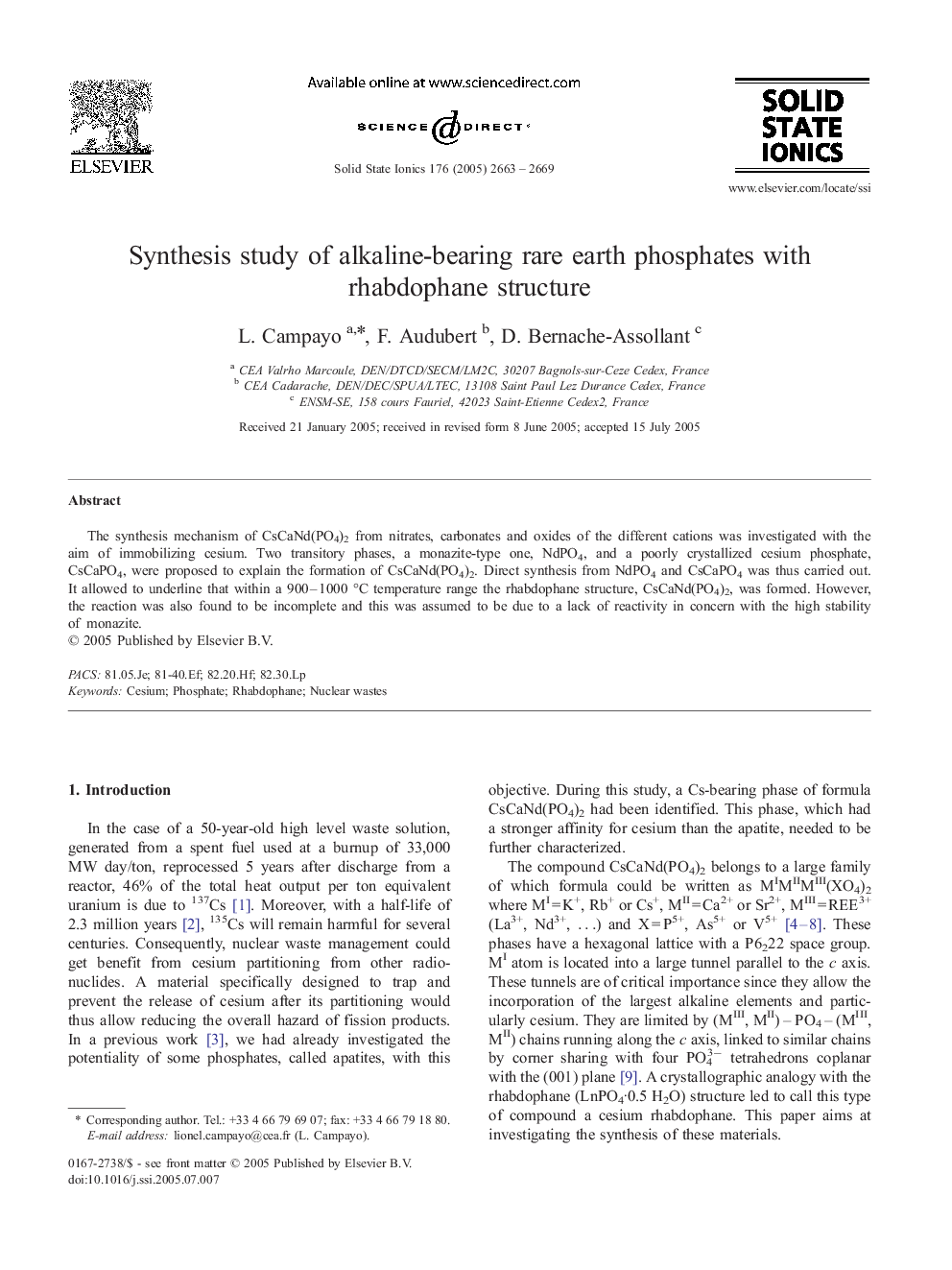| Article ID | Journal | Published Year | Pages | File Type |
|---|---|---|---|---|
| 1295752 | Solid State Ionics | 2005 | 7 Pages |
Abstract
The synthesis mechanism of CsCaNd(PO4)2 from nitrates, carbonates and oxides of the different cations was investigated with the aim of immobilizing cesium. Two transitory phases, a monazite-type one, NdPO4, and a poorly crystallized cesium phosphate, CsCaPO4, were proposed to explain the formation of CsCaNd(PO4)2. Direct synthesis from NdPO4 and CsCaPO4 was thus carried out. It allowed to underline that within a 900-1000 °C temperature range the rhabdophane structure, CsCaNd(PO4)2, was formed. However, the reaction was also found to be incomplete and this was assumed to be due to a lack of reactivity in concern with the high stability of monazite.
Related Topics
Physical Sciences and Engineering
Chemistry
Electrochemistry
Authors
L. Campayo, F. Audubert, D. Bernache-Assollant,
